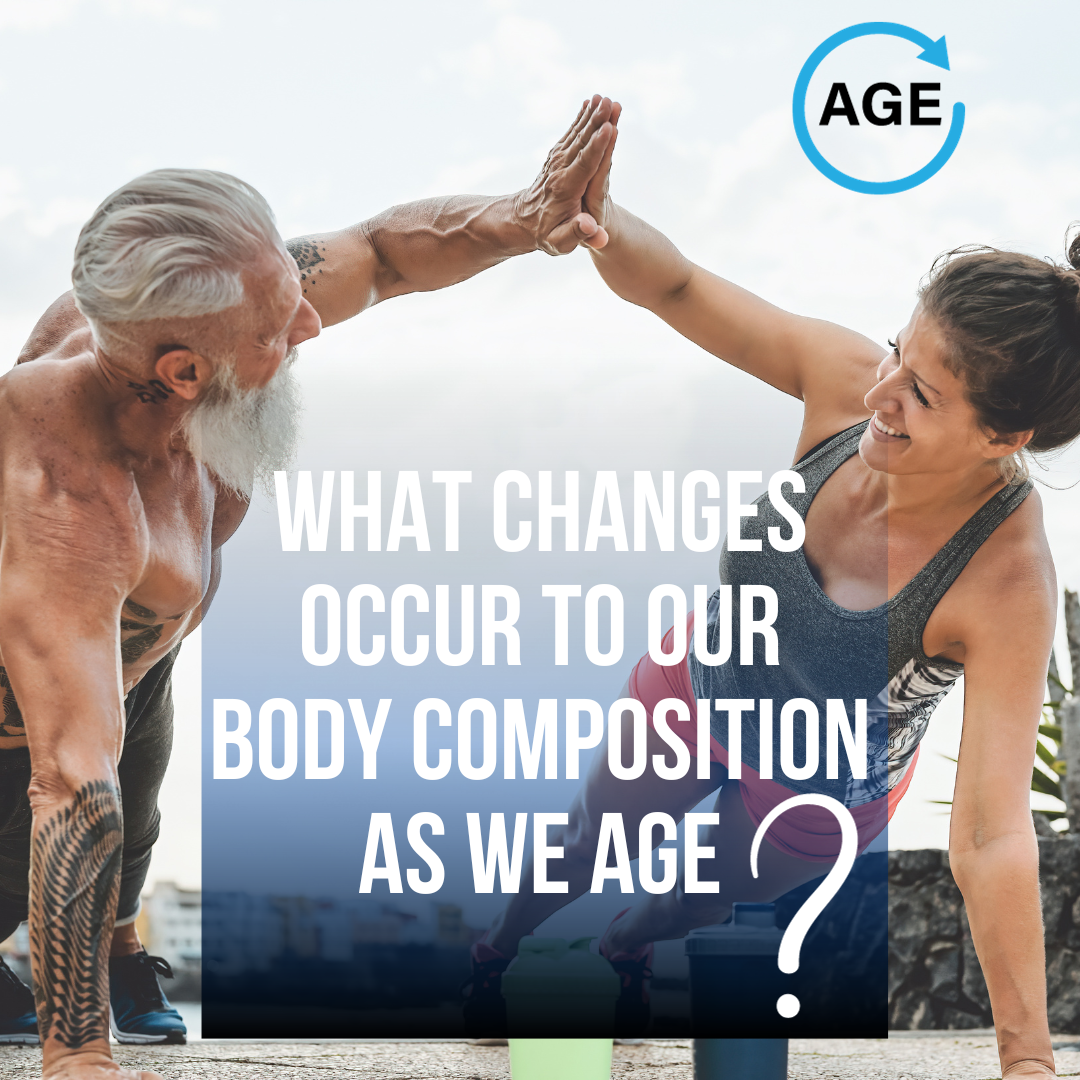As we age, our body composition undergoes significant changes that can impact our overall health and well-being. One of the key shifts is the gradual loss of muscle mass, known as sarcopenia, and an increase in fat mass. Sarcopenia is the age-related loss of both muscle fibre as well as muscle function (Larsson et al., 2019). While these changes may be influenced by factors such as hormonal alterations and also reflect some decreasing capacity for age related muscle protein synthesis (and increased rate muscle protein breakdown) they are more often the result of decreased physical activity (Wilkinson et al., 2018).
A DEXA scan will report your sarcopenic index – seen in the report (Lean Indices Table) as the Appen. Lean/ Height2 ratio. The ALHI provides a measure of muscle mass of the arms and legs (Appendicular) relative to height, helping to assess muscle health and the risk of conditions like sarcopenia. The minimum APLI for Males is 7 kg/m2 and for Females is 5.5kg/m2.
It was once thought that muscle loss was a common consequence of aging, leading to decreased strength, mobility, and an increased risk of falls and fractures. Additionally, the accumulation of fat, particularly visceral fat around the abdomen, raises the risk of metabolic disorders like diabetes, cardiovascular diseases, and other chronic conditions. These shifts in body composition can also contribute to a decrease in basal metabolic rate, making weight management more challenging.
While there are some physiological processes that indeed effect the amount of muscle we carry, this reduction can be offset with proper nutrition and physical activity (Müller et al., 2010; Müller et al., 2018). Further, although metabolic adaptations do occur when dieting for fat loss, recent studies indicate that this is not a barrier to fat loss (Martins et al., 2020) and while long term reductions in metabolic rate have been observed in association with disease (Zampino et al., 2020), a recent study by Pontzer et al. indicated that metabolic rate stays stable at least until the age of 60yrs (Pontzer et al., 2021) meaning that lifestyle factors can help maintain a healthy body composition across lifespan!
To maintain a healthy body composition as we age, several strategies can be adopted. Engaging in regular resistance and aerobic exercises can help preserve muscle mass, improve strength, and boost metabolism (Stiegler & Cunliffe, 2006). A balanced diet rich in protein, vitamins, and minerals supports muscle health and can prevent excessive fat gain. Staying physically active through activities like walking, swimming, or yoga helps maintain a healthy weight and body composition.
Adequate sleep is crucial as it supports hormonal balance and muscle recovery. Managing stress through relaxation techniques or mindfulness practices can prevent overeating and weight gain. Avoiding smoking and excessive alcohol consumption is also important for maintaining a healthy body composition.
Understanding the changes in body composition that occur with aging and taking proactive steps to address them is essential for promoting long-term health and wellness. By incorporating regular exercise, a balanced diet, and healthy lifestyle choices, individuals can reduce the negative effects of age-related body composition changes and enjoy a higher quality of life, or helathspan, as they grow older.
References
Larsson, L., Degens, H., Li, M., Salviati, L., Lee, Y. I., Thompson, W., . . . Sandri, M. (2019). Sarcopenia: Aging-Related Loss of Muscle Mass and Function. Physiol Rev, 99(1), 427-511. https://doi.org/10.1152/physrev.00061.2017
Martins, C., Gower, B. A., Hill, J. O., & Hunter, G. R. (2020). Metabolic adaptation is not a major barrier to weight-loss maintenance. Am J Clin Nutr, 112(3), 558-565. https://doi.org/10.1093/ajcn/nqaa086
Müller, M. J., Bosy-Westphal, A., & Heymsfield, S. B. (2010). Is there evidence for a set point that regulates human body weight? F1000 Med Rep, 2, 59. https://doi.org/10.3410/m2-59
Müller, M. J., Geisler, C., Heymsfield, S. B., & Bosy-Westphal, A. (2018). Recent advances in understanding body weight homeostasis in humans. F1000Res, 7. https://doi.org/10.12688/f1000research.14151.1
Pontzer, H., Yamada, Y., Sagayama, H., Ainslie, P. N., Andersen, L. F., Anderson, L. J., . . . Speakman, J. R. (2021). Daily energy expenditure through the human life course. Science, 373(6556), 808-812. https://doi.org/10.1126/science.abe5017
Stiegler, P., & Cunliffe, A. (2006). The Role of Diet and Exercise for the Maintenance of Fat-Free Mass and Resting Metabolic Rate During Weight Loss. Sports Medicine, 36(3), 239-262. https://doi.org/10.2165/00007256-200636030-00005
Wilkinson, D. J., Piasecki, M., & Atherton, P. J. (2018). The age-related loss of skeletal muscle mass and function: Measurement and physiology of muscle fibre atrophy and muscle fibre loss in humans. Ageing Res Rev, 47, 123-132. https://doi.org/10.1016/j.arr.2018.07.005
Zampino, M., AlGhatrif, M., Kuo, P. L., Simonsick, E. M., & Ferrucci, L. (2020). Longitudinal Changes in Resting Metabolic Rates with Aging Are Accelerated by Diseases. Nutrients, 12(10). https://doi.org/10.3390/nu12103061


